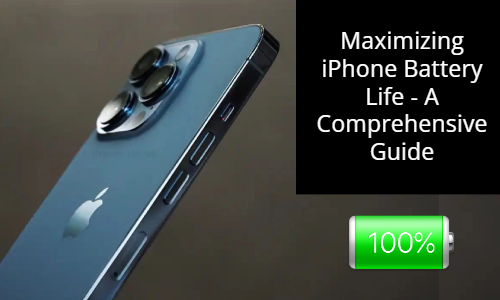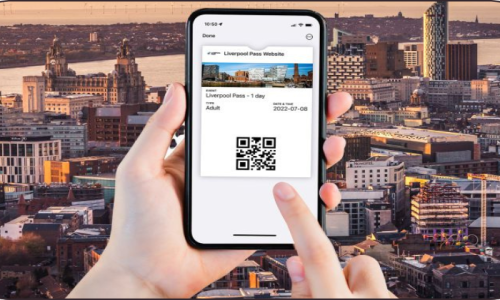Your iPhone is an integral part of your daily routine, serving as a hub for communication, entertainment, and productivity. To ensure optimal performance, it’s crucial to understand how your iPhone battery works, how to extend its lifespan, and what to do when issues arise. This guide covers everything from maintenance tips to troubleshooting common problems, giving you actionable steps to maximize your battery life.
Understanding iPhone Battery Life
1. Battery Health and Capacity
Battery health measures your battery's ability to hold a charge compared to when it was new. Capacity indicates how much energy your battery can store. Regularly checking these metrics in Settings > Battery > Battery Health & Charging ensures you’re informed about your battery’s performance.
2. Factors Affecting Battery Life
-
Usage Patterns: Activities like gaming and streaming drain your battery faster.
-
Temperature: Extreme heat or cold can degrade battery health.
-
Charging Habits: Overcharging or fully draining your battery impacts longevity.
-
Background Activity: Apps running in the background consume power.
3. Measuring Battery Performance
Use the "Battery" section in Settings to monitor battery usage by app and overall health. Third-party tools like CoconutBattery offer more detailed insights.
Proven Tips to Extend iPhone Battery Life
A. Battery Maintenance
-
Use Certified Chargers: Avoid counterfeit chargers that can damage your battery.
-
Calibrate Regularly: Fully discharge and recharge your battery monthly.
-
Store Properly: Keep your iPhone in a cool, dry place.
B. Optimizing Settings
-
Reduce Brightness: Go to Settings > Display & Brightness to lower the brightness or enable Auto-Brightness.
-
Enable Dark Mode: OLED screens consume less power in Dark Mode (Settings > Display & Brightness).
-
Turn Off Location Services: Disable unnecessary location tracking in Settings > Privacy & Security > Location Services.
-
Disable Background App Refresh: Turn it off in Settings > General > Background App Refresh.
C. Using Power-Saving Features
-
Low Power Mode: Activate it from Settings > Battery or Control Center.
-
Optimized Battery Charging: Enable this in Settings > Battery > Battery Health & Charging to slow battery aging.
D. Avoiding Battery Drain
-
Close Resource-Intensive Apps: Swipe away unused apps from the app switcher.
-
Disable Push Email: Set email to fetch manually in Settings > Mail > Accounts > Fetch New Data.
-
Turn Off Unused Features: Disable AirDrop, Bluetooth, or Wi-Fi when not in use.
Troubleshooting Common Battery Issues
1. Rapid Battery Drain
2. Slow Charging
3. Shortened Battery Life
4. Overheating
Techniques to Prolong Battery Life
| Technique |
Benefits |
| Reducing Screen Brightness |
Saves significant power |
| Using Airplane Mode |
Disables unnecessary connections |
| Closing Background Apps |
Reduces background activity |
| Updating iOS |
Includes performance fixes |
| Switching to Wi-Fi |
Consumes less power than cellular |
When to Replace Your iPhone Battery
-
Battery Health Below 80%: This is a clear indicator it’s time for a replacement.
-
Physical Damage: Swelling or broken casing requires immediate attention.
-
Inability to Hold a Charge: If your phone frequently shuts down, replace the battery.
Bonus: Comparison of Power-Saving Modes
| Feature |
Low Power Mode |
Standard Mode |
| Performance |
Slightly reduced |
Optimal |
| Background Activity |
Limited |
Fully enabled |
| Email Fetching |
Manual |
Automatic |
| Visual Effects |
Reduced |
Full |
Maintenance Tips for Long-Term Battery Health
-
Avoid Extreme Temperatures: Keep your iPhone between 16°C and 22°C.
-
Don’t Overcharge: Unplug your phone when it reaches 100%.
-
Avoid Full Discharges: Keep the battery between 20% and 80%.
-
Use Energy-Efficient Accessories: Choose certified and low-power-consuming accessories.
Final Thoughts
Battery life is vital for enjoying your iPhone to its fullest potential. By following the tips and techniques in this guide, you can significantly extend your device’s battery life and maintain its performance over time. Whether optimizing settings, monitoring health, or replacing an aging battery, these steps ensure your iPhone stays reliable and ready to meet your needs.
Call to Action
Start implementing these tips today to enjoy a seamless, long-lasting iPhone experience. Keep your device updated, manage your apps wisely, and take care of your battery for the best results.
























